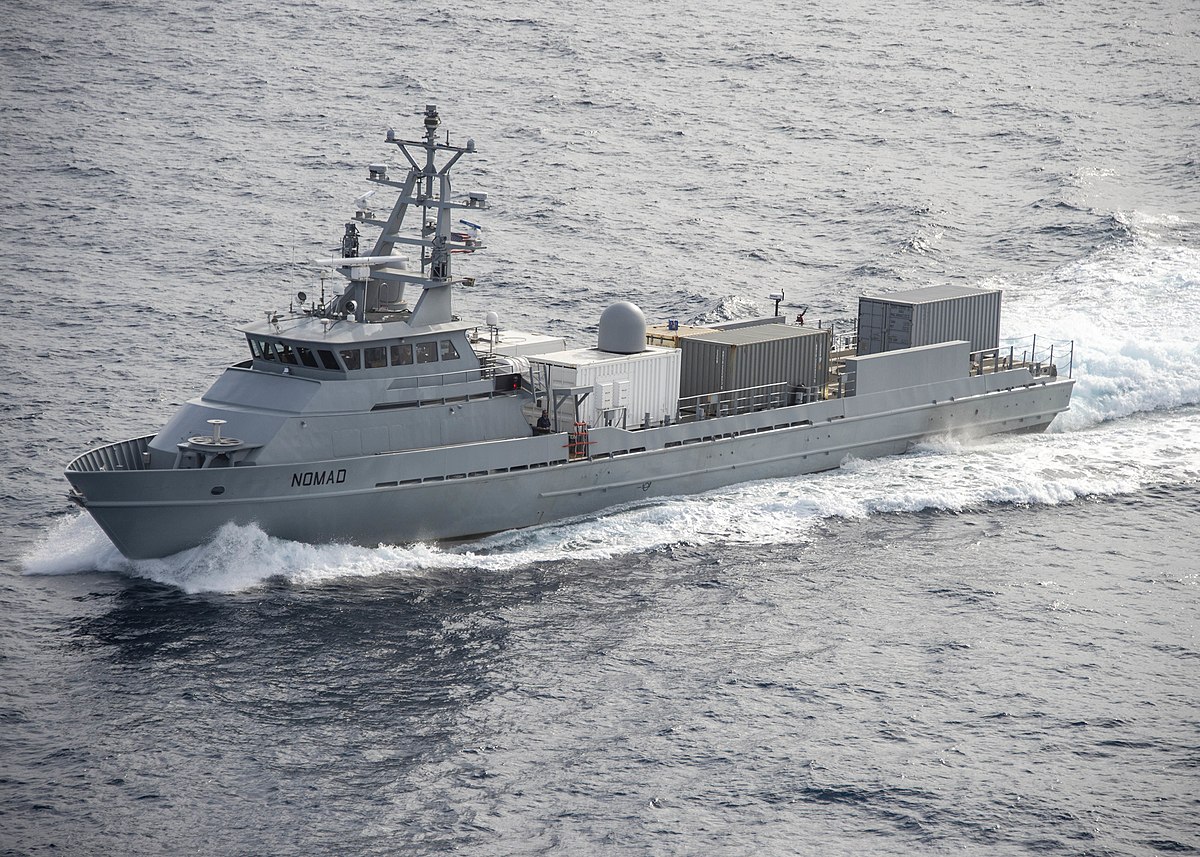The US Navy is planning to field manned-unmanned sea systems over the next ten years, which would release weapons and fire missiles without onboard human engagement.
While senior US naval officials have commented regarding the leading Unmanned Surface Vessel (USV) projects, experts caution about many technical and operational hindrances that will be difficult to overcome.
USN’s Deputy Chief of Naval Operations (DCNO), Vice Admiral Scott Conn, was quoted by Defense News saying that the manned-unmanned teaming, much like the airborne loyal wingman concept, serves six D’s – distance, deception, defense, distribution, delivery, and decision advantage.
Before that, Chief of Naval Operations Admiral Mike Gilday talked about finalizing the performance stipulations in the capabilities requirements document of the Large Unmanned Surface Vessel (LUSV) project. Both spoke on the sidelines of the Navy League’s Sea Air and Space conference earlier this month.
Fight China Inside A2/AD Bubble
The USN’s Large Unmanned Surface Vessel (LUSV) and Ghost Fleet Overlord are two key projects in this regard, which are part of larger concepts like Distributed Maritime Operations (DMO) evolved to fight China in the western Pacific.
Moderately sized semi-autonomous platforms would undertake many routine naval missions like Anti-Submarine Warfare (ASW), amphibious landing, littoral combat support, and limited land-attack, anti-ship, and air defense roles that can free up large destroyers and frigates for more complex missions.
The People’s Liberation Army’s (PLA) long-range anti-access/area-denial (A2/AD) missiles admittedly pose a massive threat to the US military by preventing it from ever getting close to Chinese shores. The aim, therefore, is to spread out, get close, and hit China inside its A2/AD bubble.

At an even broader level, it is expected to operate in consonance with concepts of other services like the US Marine Corps (USMC) Force Design-2030 and Expeditionary Advanced Base of Operations (EABO).
Small, agile, and hard-to-detect Marine units on islands of friendly countries like Japan and the Philippines will undertake anti-shipping fire on PLAN armadas in the East and South China Seas.
Fire Missiles, Scan Air, Sea & Underwater Without Human Intervention
The Navy’s FY 2024 budget documents, quoted by USNI News, state, “the LUSV will be capable of weeks-long deployments and trans-oceanic transits and operate aggregated with Carrier Strike Groups (CSGs), Amphibious Ready Groups (ARGs), Surface Action Groups (SAGs), and individual manned combatants.”
It will also “fire weapons at the direction of a person aboard a guided-missile warship or other assets.” As a proof of concept, the Navy and the Pentagon’s Strategic Capabilities Office tested the firing of a Standard Missile 6 remotely from a modular launcher aboard USV Ranger in 2021.
The budget document adds, “The vessel will be incapable of payload activation, deactivation, or engagement without the deliberate action of a remote, off-hull human operator in the command and control loop.” In other words, the vessel cannot fire the missile autonomously, without human intervention, albeit the fact that the human operator will not be on board.
Capt. Scot Searles told USNI News that 40 percent of the USN’s fleet would be unmanned in the future. This had been envisaged in its Future Force Study that suggested how a 500-ship fleet with smaller unmanned/semi-autonomous vessels and an expanded logistics force cuts the number of big surface combatants and a large carrier force.
The Medium Unmanned Surface Vessel (MUSV) and Large Unmanned Surface Vessel (LUSV) are experimental programs where the USN will buy and test unmanned prototypes until 2028, according to Defense News. The USVs will then start becoming operational from 2029 to 2033.
Therefore, the USV’s hull, electrical, mechanical systems, and autonomous sensing technologies will have to be tested to operate for months without human intervention and in complex environments.
Long Way To Go – Experts
Commodore Venugopal Vengalil, a retired Indian Navy officer, says unmanned platforms in the maritime domain are a “risky” proposition given the “complexity” of war on the sea.
“Identifying potential targets is a very complex process, even by manned platforms,” Vengalil said while speaking with the EurAsian Times.
Believing the routine tasks the USVs will be purposed to undertake to be surface, sub-surface, patrolling, and acting as a data link for up and downlinking from satellites, Vengalil also agrees with the assessment that the setup will instead serve as a bright electromagnetic target for the Chinese electronic warfare to jam.
This is because there will be more radio airwaves because of the remote control of the unmanned platform.
Samuel Bendett, a leading expert in robotic military systems and Artificial Intelligence (AI), also believes a lot of the “envisioned technology might not make it to the finish line, given how they will perform and what issues may come to light.”
“There will be lots of testing and evaluation of current and developing technologies to make these plans operational and realistic. It is also likely that a human role may be revised amidst these experiments to strike a balance between human control, logistics, and the envisioned autonomous operations. This would also involve the ongoing testing and experimentation with AI and algorithms,” Bendett told the EurAsian Times.
- The author can be reached at satamp@gmail.com
- Follow EurAsian Times on Google News